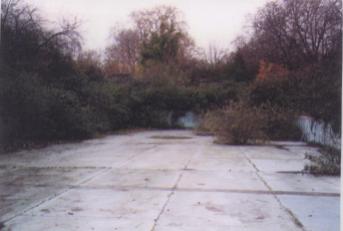Guest blog from local historian, Pat Kingwell
With summer here how lovely to see so many children and their parents in Southwark Park playground. I wonder how many of them realise the swings and slides they are enjoying are located on what was once an outdoor swimming pool! ‘The Lido’, as it was known by local people, was closed to the public in 1992 due to unsustainable costs. In 1999 the Heritage Lottery Fund agreed to fund improvements in Southwark Park, but alas the lido could not be rescued. A much-needed playground was created instead, though the structure of the original pool remains in place, hidden below the surface.
The idea of a ‘bathing lake’ had first been suggested in 1891, but it was not until September 1923 that a reinforced concrete outdoor pool was achieved by the London County Council. It cost £4,999 (about £150,000 today) and was impressively large – over 55m long, 18m wide and in parts over 2m in depth. To begin with it was open all-year round, but there were no changing facilities, just benches, and bathers were screened from the rest of the park by an earth bank formed from the excavated material. However, by 1924 ten individual changing rooms and two communal dressing sheds were provided.
Initially there was no charge to use the lido, but costumes, slips and towels had to be hired.
The pool quickly became popular and the Southwark Recorder of 25th June 1926 reported:
“During the recent heat wave the number of swimmers using the open-air bath at Southwark Park leaped to the substantial total of about 1,200 a day. In the height of the season, when the weather is most favourable, it is no unusual occurrence for the weekly average of bathers and swimmers to be maintained about 5,000. During this period of the year the baths are open from 6 a.m. till about 8.45.”
During the 1920s the moral issue of mixed bathing greatly exercised the minds of the authorities, and it was not until the summer of 1930 that it was allowed, but only on two days a week, including Sunday. To take part in a mixed session cost 6d (about £1 today). From the outset one day a week had been reserved for women only, an arrangement which in 1933 the South London Press felt obliged to comment upon:
“At Southwark Park during the lunch hour a crowd of males stood listening with envious ears to the sounds of happy laughter within. Inside, Eve, free from male presence and attired in the flimsiest of costume, gamboled and sported like mermaids in a summer sea. A sylph-like creature in a brilliant green costume poised for a moment silhouetted against the sky and cut the water like a rapier. The men mopped their brows and tried to get into the indoor baths, whose opening times are not easily ascertained.”
By the late 1930s a trip to ‘The Lido’ was a regular part of Bermondsey and Rotherhithe life, which even the Second World War could not totally disrupt. Although much of Southwark Park became a military base, and the lido itself was bomb damaged, the public continued to have a typically very cold ‘dip’ throughout the hostilities. For about thirty-five post-war years they continued to do so in an increasingly revitalised park. Better changing rooms were installed and by summer 1949 it was reported more than a thousand people per day were attending. In 1954 a new café and fountain added to the attraction. Greater access was encouraged through low charges, or none at all in the case of older and visually-impaired people, and by 1957 the South London Press could report on a heatwave day:
“Park regulations about decency in dress were cheerfully ignored by all, and bikinis were not thought out of place in the streets.”
In 1971 Southwark Park was devolved by the Greater London Council to Southwark Council. A few good years for the lido followed but diminishing use, wear and tear and unsustainable running costs cast a shadow over its future. In 1981 it was closed, only in the face of public outcry to re-open a year later. In 1984 the café building was closed to become an art gallery under the management of Bermondsey Artists Group. The lido itself struggled on until 1992, when it was permanently closed. For a decade it lay as a sad eyesore in the centre of the park, much lamented by the local community, until the site was replaced with the current children’s playground. Occasionally there is talk about building another lido in Southwark Park – now that would be something.
_________________
Appeal for images:
Unfortunately we don’t have any photographs of the Southwark Park Lido in our collections. If you have any photographs which you would like to donate to the Local History Library and Archive please get in touch: LHLibrary@southwark.gov.uk
 Sam King MBE was born in Jamaica in 1926.
Sam King MBE was born in Jamaica in 1926.








